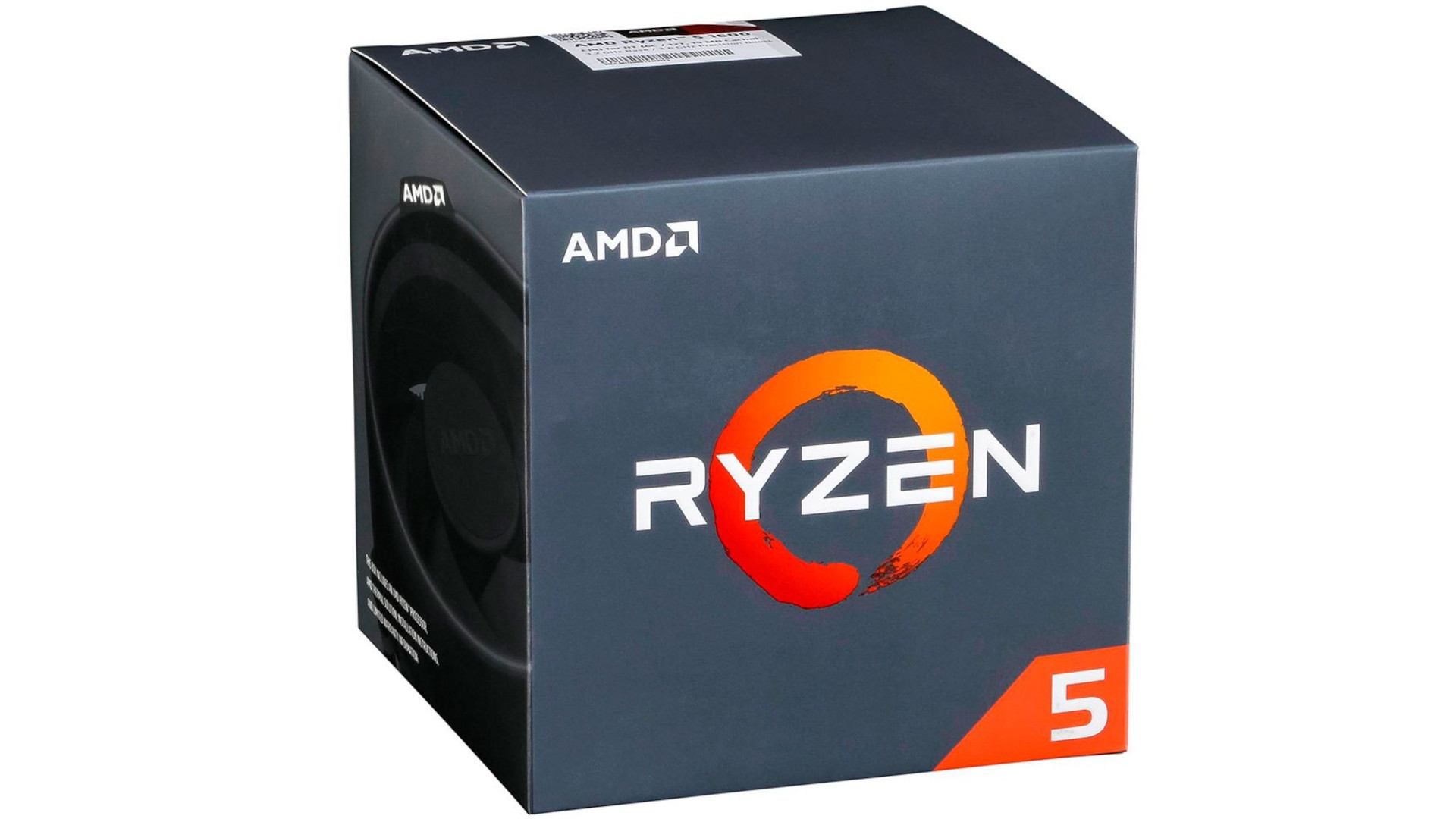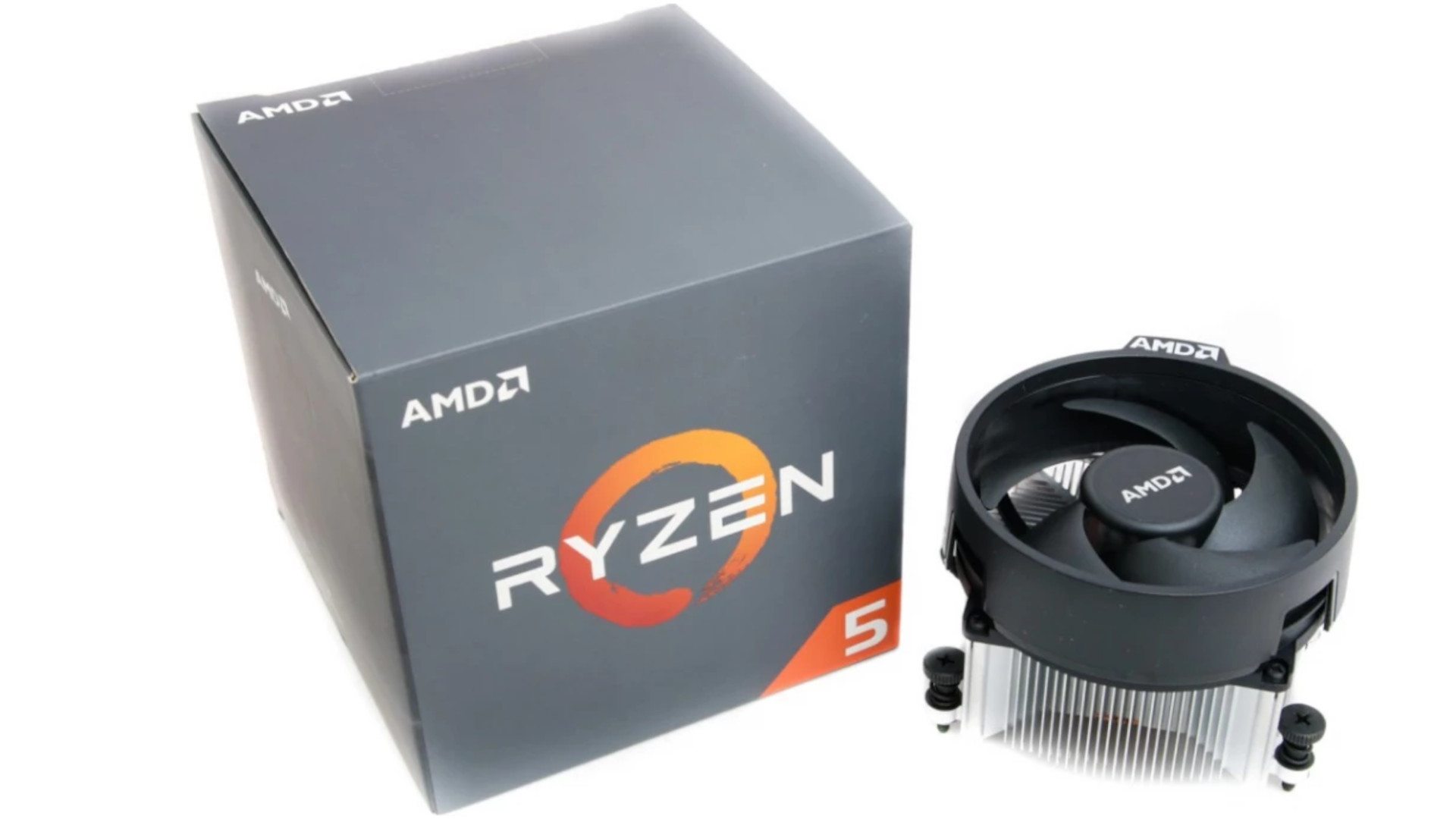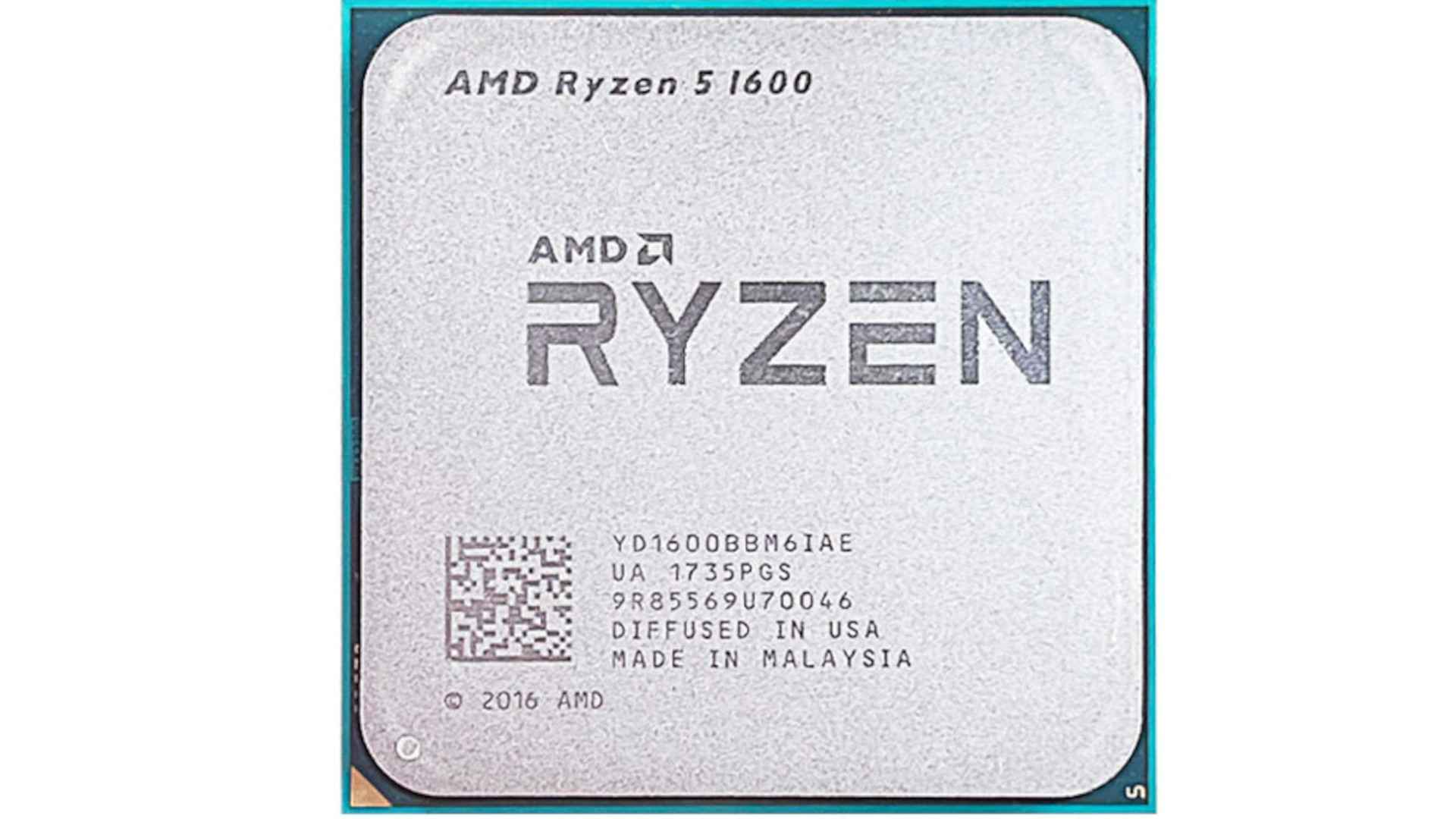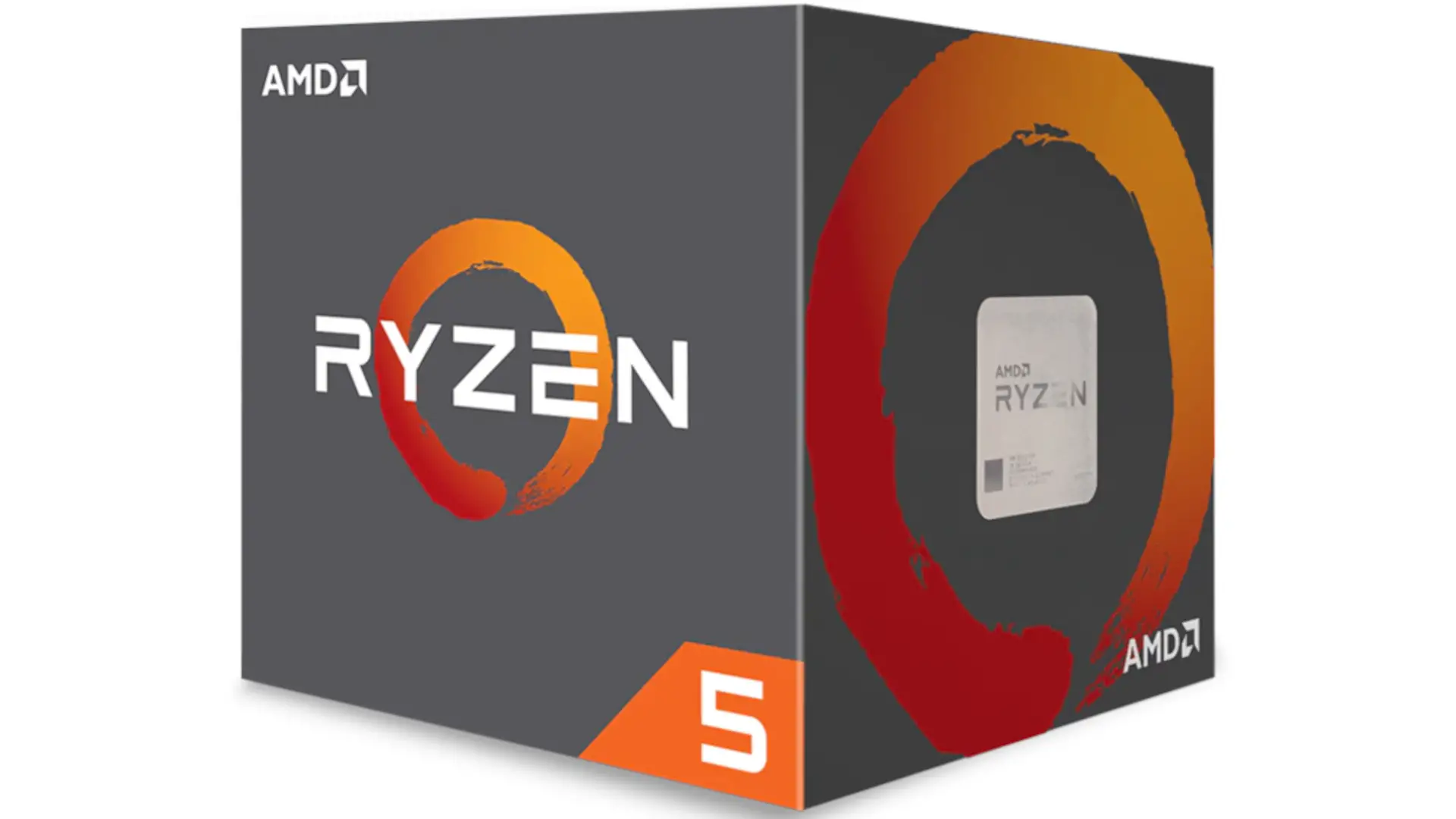Prior to the introduction of AMD Ryzen processors, Skylake and Kaby Lake, which were essentially rehashes of the original processors, were the only options on the market. Yes, there were other AMD solutions; that is logical; however, there was no workable option for a mid-range or high-end gaming team; even AMD APUs fell short. As a result, AMD concentrated all of its efforts on creating a new architecture, dubbed Zen, which gave rise to the AMD Ryzen processors, specifically this AMD Ryzen 5 1600.
Processors with the AMD Ryzen 5 1600 feature six cores and twelve processing threads. Two CCX modules with three active cores each serve as the foundation for these CPUs. These processors were created because AMD wanted to use the processors that, during the production process, one of the cores of each CCX set had some damage and couldn’t be used for the Ryzen 7.
Since the other cores are all perfectly functional, this is a regular practice among Intel and AMD processors, which use some faulty silicon processors during manufacture. All that is required is to deactivate the broken processor.
These brand-new AMD Ryzen 5 CPUs are designed to compete with the Intel Core i5 6600 and i5 7600 of the Kaby Lake and Skylake architectures. AMD processors are the best choice for simultaneous gaming and streaming, as well as photo editing, due to the differences in processing cores and threads. The AMD Ryzen 5 1400, which we have examined and which provides good gaming performance, may be a better option, but for those seeking something more, there is also the AMD Ryzen 5 1600.
It should be noted that AMD Ryzen processors are becoming better over time, with BIOS upgrades that, in part because of the AGESA code, fix some speed and latency issues. Regarding video games, Ashes of the Singularity’s recent update provided a performance boost of about 20% for these processors, and Microsoft has improved Windows 10’s performance by fixing the operating system’s initial issue where it mistakenly treated threaded processing as if it were physical cores. Over time, other games should include these upgrades.
AMD Ryzen 5 1600 Specifications
The AMD Ryzen 5 1600 comes with six cores and 12 threads, just as its $250 (on release) 1600X brother. While the 1600 fits under the 65W TDP band, AMD classifies the 1600X as a 95W component. As anticipated, the lower TDP of the 1600 results in lower voltages, lower stock frequencies, and lower thermal output. The basic clock speed of the Ryzen 5 1600 is 3.2 GHz as opposed to the “X” model’s 3.6 GHz, and the dual-core Precision Boost frequency is similarly 400 MHz slower.

XFR (eXtended Frequency Range) technology, which enables the CPU to dynamically modify its clock rate (for two cores) above the Precision Boost rating based on available thermal headroom, is not included in AMD’s non-X models, according to AMD. We observed rates that frequently soared above 3.7 GHz on two cores during a single-core Cinebench test, suggesting that the Ryzen 5 1600 is also equipped with XFR. The architecture’s large 16MB L3 cache, SenseMI suite, and unlocked multiplier are just a few of the other elements that haven’t changed.
Similar to Intel’s K-series processors, AMD’s X models don’t include thermal solutions. Therefore, their increased platform cost is matched by their increased frequency headroom. AMD adds value to the Ryzen 5 1600 processor by including its 95W Wraith Spire cooling. The 1600 fits into Socket AM4 like all other Ryzen CPUs do. A 6C/12T setup with enough of horsepower to spare for a variety of enthusiast applications may be created by combining the cost-effective processor with a cheap B350-based motherboard.
AMD Ryzen 5 1600 Specs
| Platform | Boxed Processor |
| # of CPU Cores | 6 |
| Base Clock | 3.2 GHz |
| L3 Cache | 16MB |
| Unlocked for Overclocking | Yes |
| Thermal Solution (MPK) | Wraith Spire |
| *OS Support | Windows 11 – 64-Bit EditionWindows 10 – 64-Bit EditionRHEL x86 64-BitUbuntu x86 64-Bit |
| Product Family | AMD Ryzen™ Processors |
| # of Threads | 12 |
| L1 Cache | 576KB |
| Default TDP | 65W |
| CPU Socket | AM4 |
| Max. Operating Temperature (Tjmax) | 95°C |
| Product Line | AMD Ryzen™ 5 Desktop Processors |
| Max. Boost Clock | Up to 3.6GHz |
| L2 Cache | 3MB |
| Processor Technology for CPU Cores | 14nm |
| Thermal Solution (PIB) | Wraith Spire |
| Launch Date | 04/11/2017 |
AMD Ryzen 5 1600 Performance & Tests

First up in our testing regiment is Maxon’s CPU-intensive Cinebench R15 test, which fully threads to utilize all processor cores and threads and renders complex images using the CPU rather than the GPU.
A proprietary score so indicates whether a PC is suitable for workloads that are processor-intensive.To better understand how AMD’s new chip performs in workloads with light threading, we’ve included the single-core results here in addition to the standard test that utilizes all available cores.
The single-core performance of AMD’s older generation of CPUs was a problem. Although it couldn’t compete with the Core i7-7700K or the dual-core Core i3-7350K, AMD’s new Ryzen 5 1600 processor was at least comparable with the Core i5-6600K.
In the single-core test, the more recent Intel Kaby Lake Core i7-7700K performed exceptionally well because to its high clock speed (4.2GHz to 4.5GHz) and modern architecture. However, when all cores and threads were considered, the Ryzen 5 1600 almost doubled the Core i5’s performance and even outperformed the $340 (on release) Core i7 CPU by more than 10%.
Among the Ryzen 5 CPUs, only the Ryzen 5 1600X with a higher clock speed performed better. But keep in mind that because the processor doesn’t come with a built-in CPU cooler, the $249 (on release) price is actually higher than it appears to be.

As a last test of a CPU’s multi-core capabilities, we launched the well-known file-compression program 7-Zip and ran its included compression/decompression benchmark.
The AMD Ryzen 5 1600 once more outperformed the Core i5 processor and even the Core i7-7700K. It is now evident that no Intel processor we have tested (or are aware of) that is even remotely close to the $220 price range of the Ryzen 5 1600 can compete with AMD’s performance in usage cases when all cores and threads are being utilized. The six-core, 12-thread Core i7-6800K would probably be a better match, but it costs $400 and higher and needs a costly motherboard with the expensive X99 chipset.
AMD Ryzen 5 1600 Conclusion

The 1600’s affordable pricing is difficult to overlook. Given that it performed well in our application and game suite and has the lowest price-per-core among AMD’s Ryzen offerings, this CPU also offers an amazing price-to-performance ratio. Relative to Intel’s Core i5-7600K and AMD’s Ryzen 5 1600X, neither of which includes a thermal solution, the addition of a supplied 95W cooler increases the savings.
Additionally, for a small premium above the Core i5-7500, the Ryzen 5 1600 offers superior performance in a variety of applications. That ought to make you consider upgrading to AMD’s $220 Ryzen rather than purchasing a locked Intel model.
Is AMD Ryzen 5 1600 worth it?
When the AMD Ryzen 5 1600 was originally made available as a member of the Ryzen 1000 series, it was a well-liked mid-range CPU. However, it’s a relatively outdated CPU, and its performance and worth rely on your individual requirements and spending capacity.
Here are some things to think about:
Budget: The AMD Ryzen 5 1600 could still be a good option if you’re on a limited budget and can locate it for a substantially lower price for regular computer chores, light gaming, and productivity work.
Performance: The AMD Ryzen 5 1600 has six cores and twelve threads, making it a competitively priced processor at the time of its debut. It can handle the majority of common computer activities as well as mild to moderate multitasking. However, you could find it inadequate when compared to more recent CPUs with larger core counts and enhanced architecture for more demanding applications like contemporary gaming, video editing, or 3D rendering.
Upgradeability: The Ryzen platform has the benefit of supporting several CPU versions on the same motherboard. TheAMD Ryzen 5 1600 could be a cost-effective option if you already have a suitable AM4 motherboard and are thinking about replacing an older CPU because you might subsequently upgrade to a more capable Ryzen processor.
Newer Options: Depending on your budget, you could discover that Ryzen CPUs from newer generations are more cost-effective. In comparison to first-generation Ryzen CPUs like the AMD Ryzen 5 1600, the Ryzen 3000 and 5000 series processors in particular provide better performance and efficiency.
In conclusion, if you’re on a limited budget and solely use your computer for simple chores or if you can acquire the AMD Ryzen 5 1600 at a substantially lower price, it could still be worthwhile. However, you might want to think about investing in a more modern Ryzen CPU with increased speed and efficiency for heavier tasks, gaming, or future-proofing. When choosing, it’s critical to consider both your financial situation and your unique computing requirements. Additionally, to understand what possibilities are now on the market, I advise looking for evaluations of more recent CPUs.
Is AMD Ryzen 5 1600 good for gaming?
The AMD Ryzen 5 1600 is an effective gaming CPU, especially when coupled with a good graphics processing unit (GPU). When it was initially introduced, it provided a respectable blend of multi-core speed and gaming capabilities, making it an excellent value for the money. It’s important to note that there are newer Ryzen CPUs available that give higher gaming performance.
Here are some things to think about while using the Ryzen 5 1600 for gaming:
Performance of the AMD Ryzen 5 1600 CPU: The Ryzen 5 1600’s 6 cores and 12 threads are normally adequate for gaming. The Ryzen 5 1600 gives acceptable single-core performance, especially when overclocked, which is what most games primarily rely on.
GPU Is Important: In games, the GPU frequently affects performance more so than the CPU. It’s essential to connect the Ryzen 5 1600 with a strong graphics card for the optimal gaming experience. The majority of graphic computations will be handled by the GPU, which also has a big impact on frame rates and visual quality.
Resolution and Graphics Settings: Your gaming experience will also be influenced by the resolution and graphics settings you choose. Lower graphics settings and resolutions, such 1080p, might be gentler on the CPU and result in more fluid gaming performance from the AMD Ryzen 5 1600.
Despite being capable of handling gaming, the AMD Ryzen 5 1600 is based on the first-generation Ryzen architecture, which is already a few generations old. More newer Ryzen CPUs, such as those in the 3000 and 5000 series, therefore provide superior single-threaded performance and overall gaming performance.
Overclocking: If you have a motherboard that allows overclocking and are comfortable doing so, you may be able to increase the Ryzen 5 1600’s performance, which might be useful in gaming situations.
In conclusion, the AMD Ryzen 5 1600 may still deliver a respectable gaming experience, especially if it is combined with a strong GPU and if the game settings are adjusted appropriately. However, a more modern Ryzen CPU with enhanced architecture and faster clock rates would be worthwhile to consider for individuals who value gaming and want the greatest performance. Newer versions are probably going to offer a better gaming experience because the performance gap between older and newer Ryzen CPUs has grown over time owing to architectural developments.
Can you overclock AMD Ryzen 5 1600?
Yes, the AMD Ryzen 5 1600 is an unlocked CPU, allowing for the possibility of performance enhancement through overclocking. By overclocking, you may increase the CPU’s clock rates over what they are at stock, but stability and overheating prevention must also be taken into account.
Not all AMD Ryzen 5 1600 CPUs will overclock in the same way, so keep that in mind. The stability of your overclock might vary, and some people may be able to attain greater clock speeds than others. Furthermore, overclocking might violate your CPU warranty, so take precautions to avoid overtaxing your hardware and proceed at your own risk.
Always make sure your system maintains stability under load and that temperatures don’t exceed acceptable levels. Consider asking for advice from seasoned users or experts who can help you achieve a steady and secure overclock if you’re not familiar with overclocking or are worried about the procedure.
What temperature should an AMD Ryzen 5 1600 run at?
Like other CPUs, the recommended operating temperature for an AMD Ryzen 5 1600 is normally below 80 degrees Celsius (176 degrees Fahrenheit) during periods of high load. The precise temperature range, however, may change based on elements like the cooling solution you’re using, the airflow through your system, and the temperature of the surrounding environment.
How much power does AMD Ryzen 5 1600 draw?
The Thermal Design Power (TDP) of the AMD Ryzen 5 1600 is 65 watts. The TDP of a CPU is the maximum amount of electricity it is intended to release as heat under normal operating circumstances. The Ryzen 5 1600’s real power consumption, however, can change according on a number of variables, including the workload, clock rates, voltage, and system setup.
When idle or performing light activities, the AMD Ryzen 5 1600 real-world power consumption may be less than its 65-watt TDP. In certain situations, it might only use a small portion of its TDP, frequently less than 20 watts.
AMD Ryzen 5 1600
-
Performance - 96%96%
-
Price - 98%98%
-
Value - 97%97%

